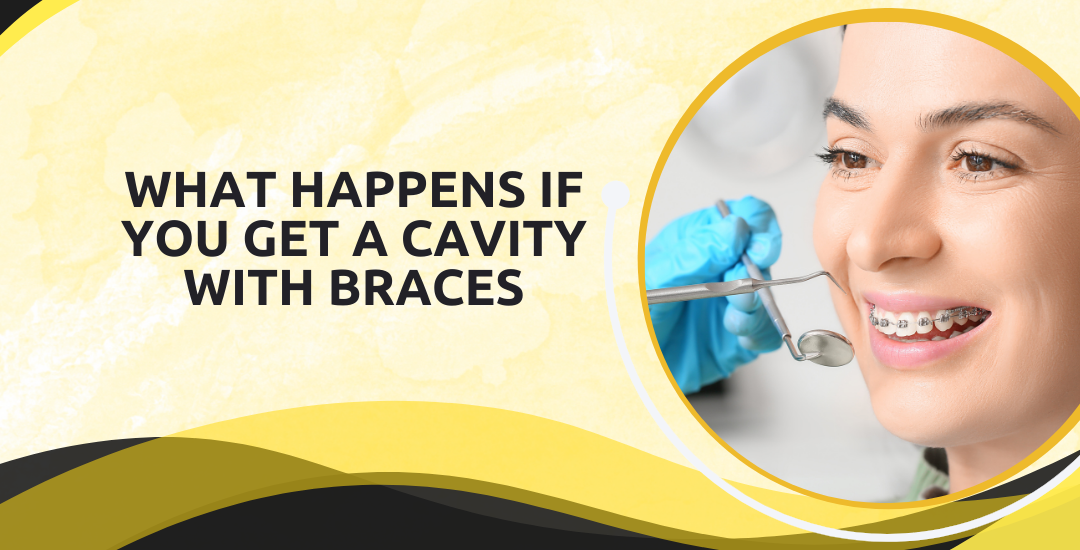Braces are one of the most effective tools in orthodontics, helping patients achieve a straight, healthy smile. However, wearing braces comes with its own set of challenges, especially when it comes to maintaining oral hygiene.
One of the most common concerns among brace-wearers is: What happens if you get a cavity with braces? This is a valid question—and a crucial one. Understanding the connection between braces and dental cavities is key to protecting your smile throughout treatment. Cavities can complicate your orthodontic journey, but they don’t mean the end of your treatment.
“Many patients don’t realize that the risk of decay increases with braces, not because of the braces themselves, but due to changes in oral hygiene habits,” notes Dr. Jahnavi Patel, an esteemed dentist in South Bopal, Ahmedabad. “With the right care and early intervention, we can treat cavities effectively, even during orthodontic treatment.”
At Dentafix Dental Clinic in South Bopal, Ahmedabad, Dr. Jahnavi Patel leads a team of skilled dental professionals specializing in orthodontic care and preventive dentistry. With over a decade of experience, Dr. Jahnavi is known for her patient-first approach, combining advanced technology with a personalized touch to ensure optimal outcomes for every smile.
Let’s break down the science of cavities and braces.
Why Braces Increase Cavity Risk
While braces themselves don’t cause cavities, they create a perfect environment for plaque buildup. The brackets, wires, and bands make it harder to clean your teeth thoroughly, trapping food particles and bacteria around them. This increases the chances of demineralization, where enamel begins to erode due to acid attacks, leading to cavities.
Also, sugary foods and starches fuel aggressive bacteria in your mouth. Without good oral hygiene, which is common with braces, the bacteria break down and release acids that destroy your enamel. Teenagers and younger patients, the most common wearers of braces, may struggle with basic brushing and flossing habits.
Feel like putting on braces is getting harder to protect your smile? Contact a dental specialist today for expert advice and care.
What Happens When You Develop a Cavity With Braces?
If you develop a cavity while wearing braces, your dentist or orthodontist will need to assess its severity. Cases involving braces and dental cavities require careful evaluation to prevent further complications without hindering your treatment progress. Minor cavities may be filled without removing brackets, using special tools that allow access around your braces. In some cases, a bracket may need to be temporarily removed to place a filling effectively.
Untreated cavities can lead to pain, sensitivity, gum issues, and even infection. Worse, they can jeopardize the success of your orthodontic treatment. Early treatment is the best way to prevent more severe problems in the future.
The dental team at Dentafix utilizes digital X-rays and intraoral cameras to detect cavities early, even in tricky spots around braces.
Will a Cavity Delay Orthodontic Treatment?
Yes, cavities can set your orthodontic treatment back. If the decay is severe, treatment will have to stop to fix it. This could involve temporarily readjusting or even taking part of your braces off.
The time impact will vary, depending on how soon the cavity is detected and its size. That said, early-treated mild cavities rarely cause significant delays. Hence, regular follow-ups and good oral hygiene throughout orthodontic treatment are essential.
We work closely with our general dentistry and orthodontic team at Dentafix to keep you on schedule with your braces.
Will a Cavity Delay Orthodontic Treatment?
There are various methods that dentists use to restore cavities in patients who wear braces:
- Tooth-Colored Composite Fillings:
These resin composite fillings are best for restoring small to mid-sized cavities and can usually be accomplished without interrupting your braces. Their aesthetic blend with your natural tooth color is a bonus.
- Temporary Bracket Removal and Rebonding:
For inaccessible decay under brackets, we temporarily remove them and then rebond them using highly advanced bonding materials, thereby maintaining your alignment progress.
- Minimally Invasive Icon Resin Infiltration:
In the case of white spot lesions, a first indicator of enamel demineralization, we utilize Icon infiltration technology to stop progression without drilling, preserving tooth structure.
- Varnishes and Fluoride Sealants:
We place these protective coverings after treatment to fortify enamel and guard against subsequent cavities in compromised areas near brackets.
- Advanced Imaging for Precision:
Intraoral scanners and digital radiography help us locate decay accurately, even in areas partially covered by orthodontic appliances.
Our team is trained to work efficiently in the presence of orthodontic hardware, ensuring your cavity is resolved quickly and with minimal discomfort.
Prevention is always better than cure—particularly with braces.
Protecting Teeth During Orthodontic Treatment
Preventing cavities while wearing braces begins with good habits:
- Brushing after each meal: With an orthodontic toothbrush and fluoride toothpaste.
- Floss daily: Floss between teeth and wires using floss threaders or a water flosser.
- Rinse with fluoride mouthwash: Strengthens enamel and kills bacteria.
- Limit sugary foods and drinks: Especially sticky sweets and fizzy drinks.
- Schedule frequent cleaning: Professional attention is required to detect early signs of trouble.
Our dental professionals also provide personalized oral hygiene plans for brace-wearers, including dietary advice, brushing techniques, and product recommendations on a patient-by-patient basis.
Conclusion
So, what happens if you get a cavity with braces? Like many cases of braces and dental cavities, this doesn’t have to be the world’s end. This will actually add a little complexity to your treatment plan, but with proper care from experienced specialists like Dr. Jahnavi Patel, you can treat cavities correctly without delaying orthodontic treatment. Maintaining hygiene and regular dental checkups ensures your smile comes out as planned.
Frequently Asked Questions
Can braces cause cavities directly?
No, braces don’t cause cavities directly. However, they make cleaning harder, which increases cavity risk.
What happens if you get a cavity with veneers?
Decay can still occur on the natural tooth under veneers and must be treated without damaging the veneer.
Can you still get fillings with braces?
Yes, most cavities can be filled without needing to remove your braces.
Do orthodontists treat cavities?
No, general dentists typically handle cavities, though orthodontists monitor oral health during treatment.
Is white staining around braces a sign of cavities?
It could be. White spots often indicate early demineralization, a precursor to cavities.
Can fluoride help prevent cavities while wearing braces?
Yes, fluoride helps remineralize enamel and reduce the risk of decay, especially around brackets and wires.
Can you have cavities with braces?
Yes, cavities can still form with braces if oral hygiene isn’t thorough.
Can you get cavities filled with braces?
Yes, cavities can usually be filled with braces. There are specific procedures that dentists must follow in order to work around the brackets, and sometimes a bracket can be taken off and replaced after a filling.
Reference links:
Disclaimer: This page is for informational purposes and not for promotional use.









